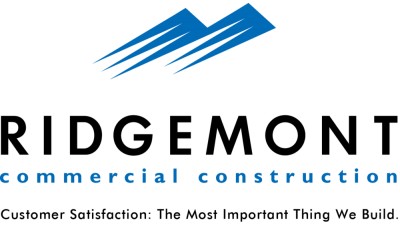For Developers In DFW, The Next Industrial Destination Is Outside The City

The rising demand for industrial space has made the construction and development process a challenging one. Fueled by increased e-commerce activity and changing methods of delivery and distribution, industrial facilities have become some of the most desired assets in commercial real estate. In Dallas-Fort Worth, a city at the center of the country and with a plethora of HQs of global corporations, the demand for industrial space is particularly high. Developers are struggling to find enough space to meet the growing tenant demand.
Commercial real estate professionals are seeking to solve this problem by getting creative about site selection. There is more space to build away from the urban core, and developers are getting more bang for their buck when they decide to build outside of the city’s traditional markets. There is an increased interest in areas like South Dallas and Mesquite, which have over 938K SF and 2.3M SF under construction, respectively, according to a Cushman & Wakefield report.
“One thing we’re seeing in the industrial space is more of a trend toward moving out,” Ridgemont Commercial Construction Director of Office and Industrial Damon Norman said. “The inner part of town is pretty much full, and land costs further from the city’s center [are] less expensive.”
Building out into new submarkets allows tenants and their contractors to get more creative with the structure and design of these facilities. Norman has noticed a trend toward increased clear heights reaching 40 feet and higher, enabling increased rack and storage heights and conversion of space to accommodate mezzanine storage. He has also seen a greater focus on flexibility. Construction firms are focusing on building to accommodate future availability. This future-proofing gives the tenant room to grow, and provides additional flexibility should the facility be sold to another tenant down the road.

With the opportunity for additional space and flexibility, tenants are becoming more specific in their preferences. The companies that occupy these facilities are constantly changing, and they need spaces that can change with them.
“Tenants are expecting more out of their buildings, whether it’s higher clear heights, more trailer parking or an abundance of car parking,” Scannell Properties Managing Director Kristopher Arviso said. “A lot of new facilities have several hundred employees as operations have become more labor intensive, despite the fact there is more automation inside the buildings. Industrial buildings are having to adapt in a lot of different ways, and the tenants are rewriting those rules.”
Arviso, who is leading the development of several industrial facilities in DFW, spends a lot of time focusing on site selection. He has a formula for choosing land well-suited for each industrial property.
“We look at a map, and really think about where tenants want to be from a logistics standpoint,” he said. “We then ask, what is the labor situation in that area and is there available land that is, or can be, zoned for industrial? We use that to drill down on where we target sites and expand out from there as needed. Unfortunately, we are having to expand our searches quite a bit these days.”
While many of DFW’s outer submarkets are ripe for development, they also come with several challenges. For instance, one characteristic that prospective tenants look for in an industrial space is the availability of labor. But it is more difficult to find talent outside of traditional submarkets, Norman said. This, paired with the growing labor shortage sweeping communities across the country, has caused tenants to grow weary about choosing industrial facilities in farther-out locations.
There is also the problem of infrastructure in some of these less traditional submarkets. Because these areas have seen little development in the past, there has not been the same type of funding in roadways and infrastructure as other markets. This can be especially detrimental for industrial tenants, which rely on the transportation and delivery of goods to drive revenue.
To remedy this, cities are increasing their commitment to infrastructure.
“In DFW, there is a lot more collaboration between developers, investors and municipalities to bring infrastructure and transportation to these industrial sites,” Norman said. “It is good for the city because it helps encourage economic growth and development.”
It is still a work in progress, but industry experts remain optimistic about the future of industrial in DFW.
“As the population in DFW continues to grow, the industrial sector will continue to thrive,” Arviso said. “DFW is ideally located in the center of the country with a strong labor base. Layer in the explosive growth in e-commerce, and corporations’ focus on improving supply chain efficiencies, [and] DFW will continue to grow. I fully expect the health of the industrial sector to remain strong for the foreseeable future.”
This feature was produced in collaboration between Bisnow Branded Content and Ridgemont. Bisnow news staff was not involved in the production of this content.

